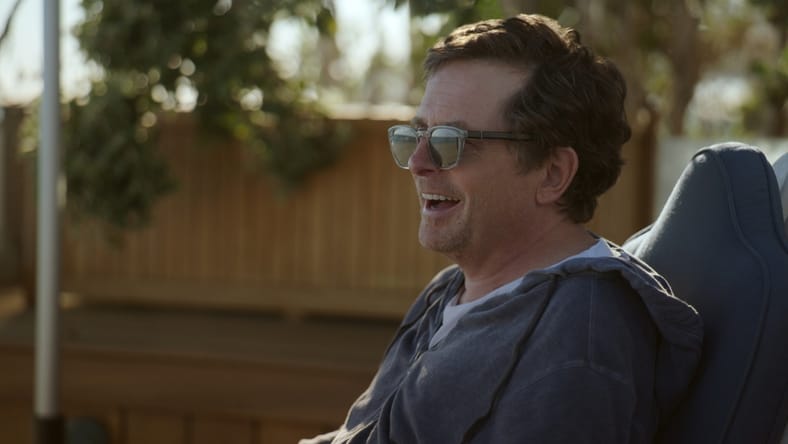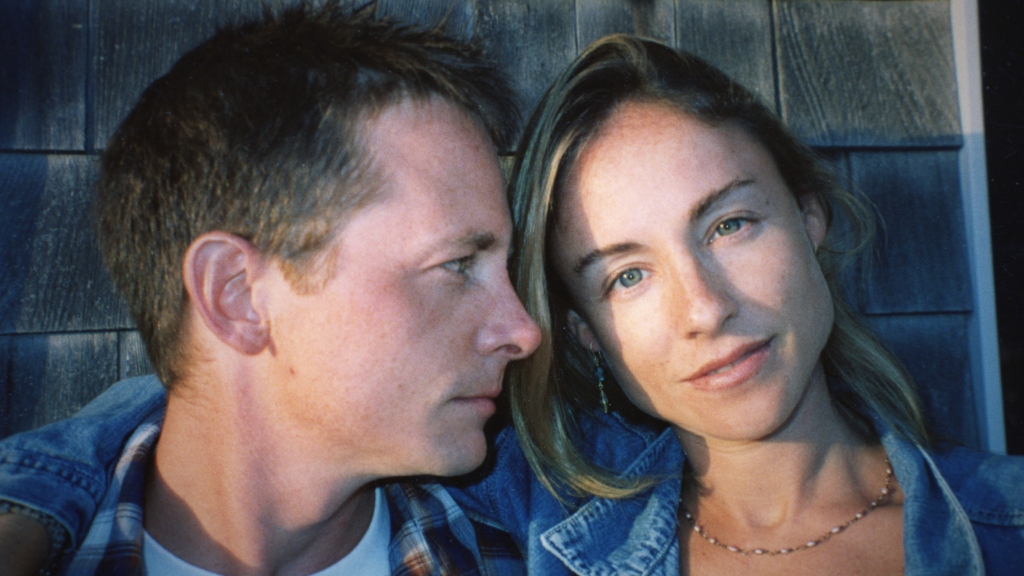
STILL: A Michael J. Fox Movie tells the actor’s life story both before and since his Parkinson’s diagnosis. But what makes it one of the most innovative documentaries of the year is its deft combination of documentary, archival, and scripted elements.
Directed by Davis Guggenheim, the documentary is based on Fox’s book, No Time Like the Future: An Optimist Considers Mortality.
Over a period of several years, cinematographers C. Kim Miles, Clair Popkin, and Julia Liu filmed multiple scenes with Fox, each picking up different parts of the movie where the others left off.
“I think for documentaries, it’s not that unusual to have multiple cinematographers, because often a project will span a long period of time with lots of breaks in between,” Liu tells MovieMaker. “You can’t necessarily guarantee availability because we’re all freelancers.”
Behind the Lens of STILL: A Michael J. Fox Movie
In the following Q&A, we talked with the three cinematographers about how they worked together to tell Fox’s unique life story. C. Kim Miles tells us about using archival footage from Fox’s films to recreate parts of his life; Clair Popkin tells us how Fox’s positive attitude kept STILL uplifting; and Julia Liu tells us how the emotional arc of the narrative dictated the lighting of each scene.
This interview has been edited for style and clarity.
MovieMaker: Audiences usually know how to distinguish between fiction and nonfiction movies, but because STILL uses so many recreations cut together with archive footage of Michael [J. Fox], it feels more like a fictional story in its presentation than a documentary.
C. Kim Miles: I think that intention was kind of a key part of the overall visual aesthetic. Prior to my portion of the shoots, I had a lot of discussion with Davis Guggenheim about what we hoped to get out of it — what it was going to look like.
I would use the location scout and figure out if they’re going to light it, which is not always the case in the documentary, but I lit most of the scenes that I shot and then they shot them in a more traditional way. Julia [Liu] had established the look using prime lenses and making the camera a little bit more still. I think that’s a little more traditional to making a film than a documentary.
MM: Before we move on, the movie credits C. Kim Miles as the director of photography and Clair Popkin and Julia Liu as photographers. Will you explain how you decided who had each role?
C. Kim Miles: At the end of the day, everybody had an equal share of the visual storytelling between the three of us. We all had our own contributions to make to the show. Davis and I had a conversation about credits and he wanted to give me the director of photography credit and I protested. I said it should be all three of us.
That went on for a little bit and it’s tough to win an argument with Davis, but it just came down to running time. Whoever gets the longest running time in the show received the DP credit. It seems a little bit misleading to me because I really didn’t have anything to do with a lot of the movie so it feels like a bit of a misnomer to me, but everyone had equal contributions.
Julia Liu: I began as the project’s DP and we would shoot for a few days here and then be down for a month or maybe even more. It’s shot piecemeal, whereas in narrative, it’s usually shot in a blocked-out set of time.
Clair Popkin: Michael’s health was a factor in scheduling, so there was a lot of starts and stops and things that were planned but moved to a month later. I think I came in because there were some shoots that Julia couldn’t do and she’d already established the look. I had a relationship with Davis already established from other projects we’d shot and I felt very lucky to be able to fill Julia’s shoes a few times.
C. Kim Miles: By the time I came along, Julia and Clair already laid the roadmap out of what the film was like and there was a very clear breakdown of what was remaining in terms of the reenactment narrative stuff for me to fill in at the backend.
Also Read: STILL: A Michael J. Fox Movie Is Composer John Powell’s 65th Movie — But It Was Also a First
MM: Michael was adamant that the documentary isn’t a sad-sack story about a guy who gets an incurable disease. How did you shoot the movie with that in mind?
Clair Popkin: A lot of it comes to Michael — like, he’s not telling a sad story. He’s triumphant. His energy is infectious, and that percolated throughout the set and everyone just received it. I think it was, we were capturing what happened, and what happened wasn’t sad.
Julia Liu: Davis had a pretty clear plan on this arc based on Michael’s book. There were happy scenes that we lit brighter and sunny, and there was a scene when Michael’s working with his trainer that’s a low point for him, so we lit it more shadowy and contemplative.
C. Kim Miles: You feel as an audience very connected to Michael and very connected to the film. I think a lot of that was set up very early by bringing Michael’s eye line right into the lens during the interview portions filmed by Julie. As an audience, you feel a little disarmed at first, but then it feels like you’re having a conversation with Michael.

MM: When Julia shot Michael’s interview, the camera is locked in place and Michael is the one who is moving within the scene. How did you anchor the other movement your camera makes in the rest of the movie?
Julia Liu: I think that was Davis’s call. From the beginning, we knew that the camera during the interview would be locked off and Michael would be centered and the eye line would be direct to the lens. But we had to figure out the best location to shoot the interview.
Michaels’ office made the most sense because it has some symmetry. It has these beautiful photographs and awards in the background, but it’s not too showy. I think the idea was to contrast with Kim’s work and all of the archival that is so dynamic with Michael’s younger self and how acrobatic he was in his acting.
MM: Did you know archive clips from Michael’s work would be used in the recreations?
Julia Liu: I think that was mostly discovered throughout the editing. Because STILL is so heavily archival, I think it was ingenious then to use clips from his films to tell scenes that happened in his real life.
Clair Popkin: When I joined the project, I saw some assemblies that had already been put together, including some of Julia’s footage and including a bunch of archival, and some of the scenes relied heavily on clips from Michael’s past projects.
I think there was the intention for Kim to shoot more reenactmets, but at some point they actually ended up using a bit more of the archival footage to tell those parts of the story.
C. Kim Miles: While our editor Michael Harte was listening to audio from Julia’s interviews, he was also going through our archival footage, and it started occurring to him that there are beats in this archival footage that tell Michael’s real story, but they’re clips from his movies.
So it evolved in post-production a little bit towards that, which was good because it meant we had to recreate fewer scenes from Michael’s work. But more than anything, it strengthened the film so much and gave the film its identity. The way that it so seamlessly blends all the types of footage, you never really know if you’re watching archives or recreations.
MM: Did you try to match the lighting on the recreations with the lighting of the archival footage?
C. Kim Miles: Absolutely. I’ve done very limited multi-cam sitcoms like Family Ties, but we had a pretty good idea of how it was lit. For the Back to the Future scenes, we looked at the footage and decided how they lit it. We matched lighting gels for moonlight colors and that sort of thing. It was kind of like shooting a second unit for a movie, but shooting a second unit for a movie that was shot 35 years ago.
STILL: A Michael J. Fox Movie is now streaming on Apple TV+.
Main Image: Michael J. Fox in STILL: A Michael J. Fox Movie, courtesy of Apple TV+.
Share:

